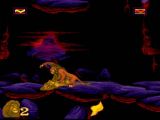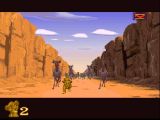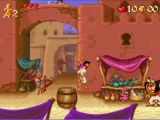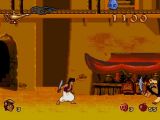Double Fine and 2 Player Productions released the first installment in a new series dubbed Devs Play, meant to highlight some of the things that happen behind the curtains of game design, while also providing the traditional content of a Let's Play session.
The show will combine the commentary of a Double Fine member with the perspective of an experienced developer who worked on the highlighted video game, offering a fresh and unique perspective on the title.
The first edition of the new show focuses on some older titles that are dear to many gamers, two amazing action platformers from the heyday of the genre, namely Aladdin and Lion King.
Double Fine's Greg Rice is joined by Westwood Studios co-founder Louis Castle, for a full playthrough of The Lion King, the classic platformer from 194.
Louis tells the story of how, with a small team, a tight schedule, and some bizarre peculiarities, Westwood managed to create the spiritual successor to the hit platformer Aladdin, during the era of Disney's return to its glory days.
The second episode is set to debut on December 30 and to feature Earthbound (The Mother Trilogy), a Japanese role-playing video game series that initially started on the Super Nintendo Entertainment System video game console, back in 1994.
The making of Lion King
The video clocks in at an hour and sixteen minutes, starting with a 12-minute overview of Aladdin, the first Disney video game to see massive success, setting up the story of Lion King and explaining how the video game developers worked together with Disney's animators to make the two titles look as good as they did when they were released.
The video reveals some of the thinking behind designing video games, explaining the difficulty of the older titles when compared to stuff we see today, where there are on-screen instructions for moving and shooting.
Back then, a game like Lion King was supposed to last a while, as there weren't that many games available and there weren't that many adults with deep pockets to purchase them indiscriminately, which meant that titles had to offer a lot of game-time for the money in order to be taken up by players.
Thus, games had to be hard to beat, to demand a level of mastery from a player, and also to hide many secret areas that would justify subsequent playthroughs.
In addition to this, in the case of Lion King, the frustrating puzzle where you had to roar at monkeys to change their position and find the right sequence so they would throw you over an obstacle, during the game's second level, was created as a bespoke measure to secure purchases, as game cartridges used to be rented by various outlets, and if players got too far into the game, they wouldn't consider buying it anymore.
In addition to this, the discussion also covers enemy design, the way the Lion King game followed the succession of events in Disney's movie, and how, after making a ton of completely blind secret areas in Aladdin, the team decided to make a sort of marker, to deliver a clue for the hidden areas of Lion King.
All in all, it's a very interesting watch, especially if you actually played the two games, since it will no doubt bring back many memories.

 14 DAY TRIAL //
14 DAY TRIAL // 







